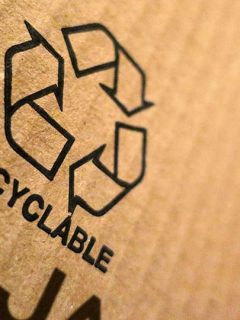European Union member states have been committed for years to reducing the use of thin plastic bags. The European Directive 2015/720 stipulates that plastic carrier bags should have a wall thickness of at least 50 microns (= 0.05 mm). The light bags you got in the supermarket, for example, will disappear from the street scene as a result. Fortunately, as a trader, you have a wide choice of alternatives.
The Green Deal is the European action plan that aims to make Europe the first climate-neutral continent by 2050. One of the key strategies to achieve this is building a circular economy. How does that translate in terms of packaging?
By 2030 at the latest, the EU wants all packaging to be reusable or recyclable. Products and services that we can only use once will be discouraged or even banned - as is the case for very thin plastic bags. Only bags that are easily recyclable or often reusable will still be allowed on the market.
Top five alternatives to banned plastic bags
► 1. Carrier bags made of kraft paper
Kraft papercarrier bags are an obvious alternative to plastic bags. Kraft paper is a material that is very sturdy. A small bag can carry up to 12 kg while you can easily carry up to 14 kg with a medium-sized bag. What other advantages do kraft paper carrier bags offer?
- They are easily degraded by the environment in just a few months.
- The process of recycling them is quite simple. Kraft paper can be recycled up to six times on average.
- The customer can easily reuse the bag several dozen times.
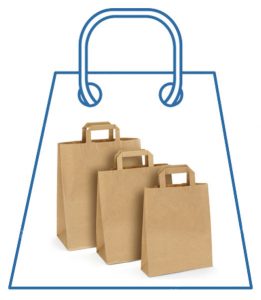
► 2. Carrier bags made of plastic ≥ 50 microns
To be clear, not all plastic carrier bags will be banned. You will still be allowed to continue using the strong varieties over 50 microns. Micron indicates the thickness of the plastic. The higher this value, the thicker and sturdier your plastic bag is. Carrier bags in plastic ≥ 50 microns have a thicker and therefore sturdier wall. As a result, they can be reused for longer periods without any problems. And let that ‘reuse‘ be one of the cornerstones of the circular economy the EU is pushing for.
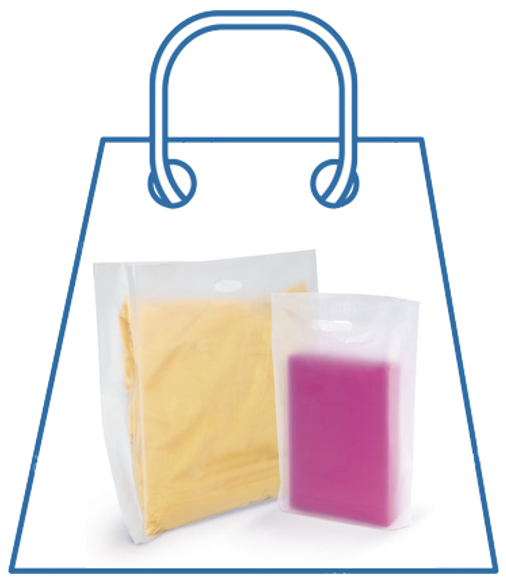
► 3. Carrier bags made of polyester
Carrier bags in polyester are endlessly reusable. Polyester is a fabric often found in, for example, the textile industry. This material is crease-resistant and optimally retains its shape. It also absorbs virtually no moisture and is highly resistant to sunlight. You can fold these carrier bags very easily and slip them into your handbag or pocket. You then always have a shopping bag at hand that is ready for use immediately.
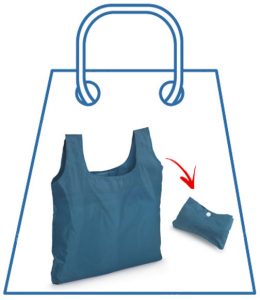 ]
]
► 4. Carrier bags made of jute or cotton
Cotton or jute tote bags are not only sturdy and practical, but also thoroughly trendy. Cotton carrier bags are easy to fold so they fit in your pocket or handbag. If you need them, simply unfold them. Cotton is by nature a very strong material. It does not wear out and offers a longer quality guarantee. After cotton, jute is the most widely used natural fibre. Jute bags are durable, very strong and can be made into compost.
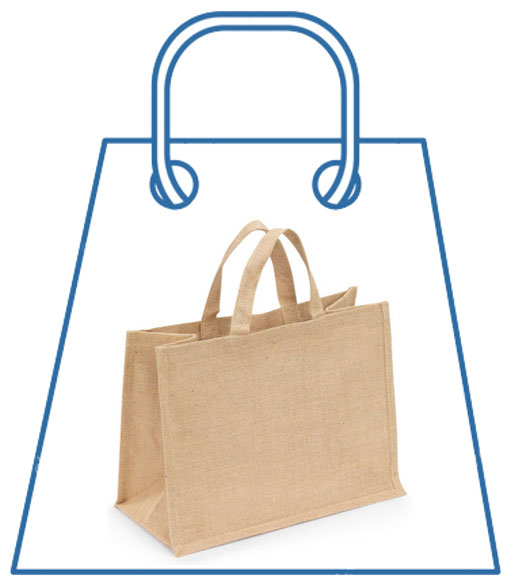
► 5. Carrier bags made of polypropylene
The last type of carrier bag we stop at is the polypropylene variant. Polypropylene is one of the most widely used plastics. It hardly deforms, is very strong, colourfast and heat-resistant. Unlike a lightweight plastic bag, a polypropylene bag can be reused up to 400 times.
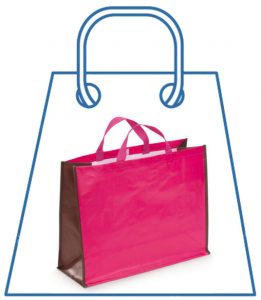 ]
]
 Did you know. All these bags are personalisable in addition to reusable? At Rajaprint, you will find an overview of all the possibilities to add your brand or logo. This makes your brand visible everywhere: from the trendy shopping street to the smallest room in your customers’ homes.
Did you know. All these bags are personalisable in addition to reusable? At Rajaprint, you will find an overview of all the possibilities to add your brand or logo. This makes your brand visible everywhere: from the trendy shopping street to the smallest room in your customers’ homes.













